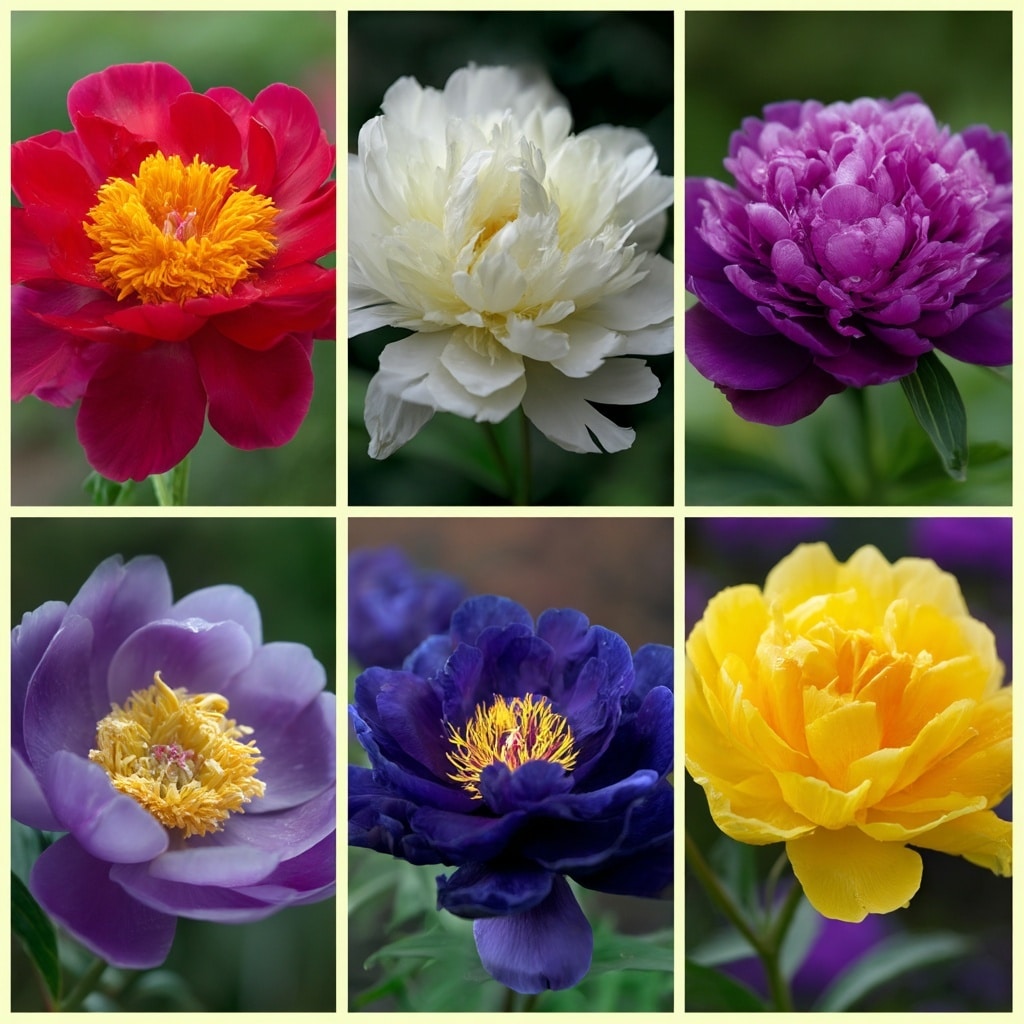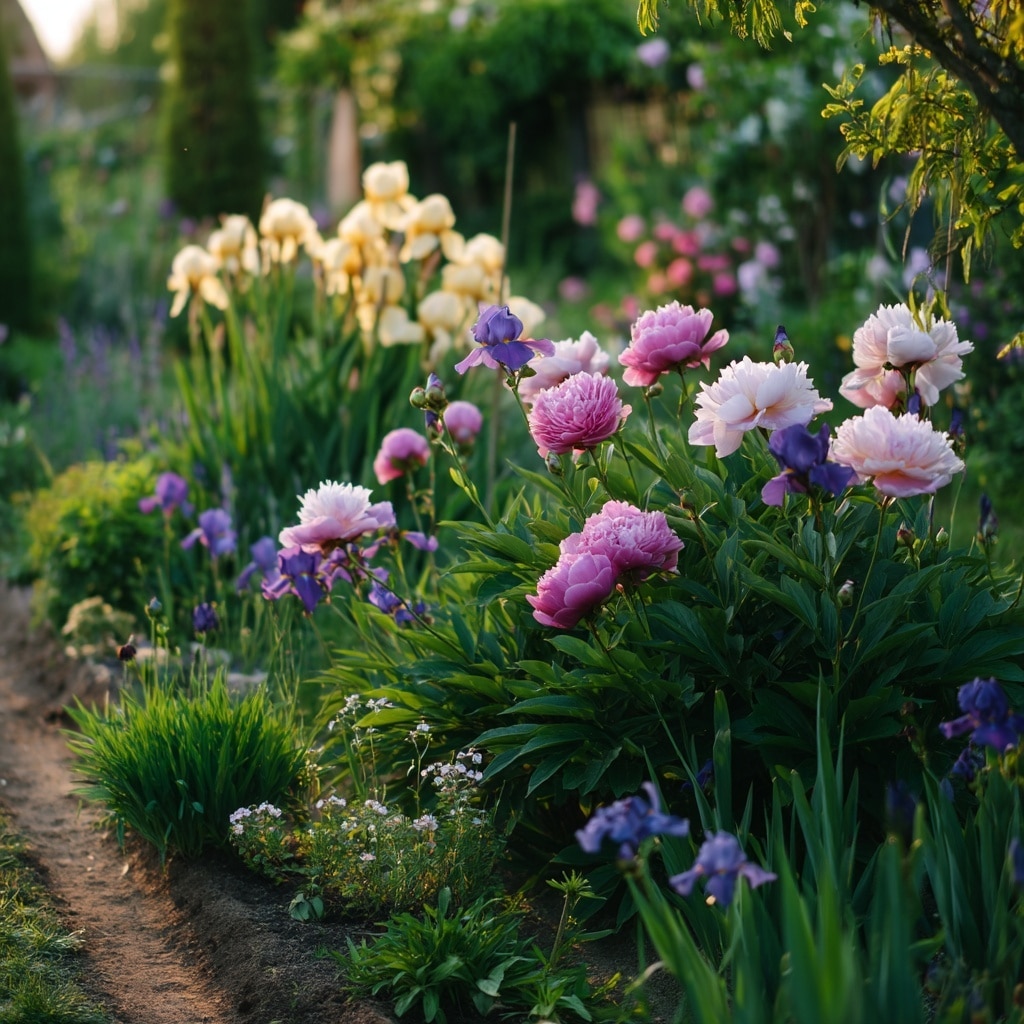Peonies are among the most beloved perennials in the garden, cherished for their lush blooms, sweet fragrance, and impressive longevity. A mature peony can live for decades, producing layer after layer of ruffled petals each spring. Their sheer beauty and ease of care make them a timeless favorite for both beginners and experienced gardeners.
From soft pastels to bold jewel tones, peonies offer a stunning palette to brighten your garden. And with the right planting, peonies can thrive for generations with minimal fuss. In this guide, we’ll walk through everything you need to know—from where and when to plant to choosing the best varieties and extending the bloom season.
Table of Contents
Where to Plant Peonies
Choosing the right spot is essential if you want peonies to thrive for decades. These long-lived plants don’t like to be moved once established, so take care when selecting a location.
Peonies need full sun—at least 6 to 8 hours a day—for the best flower production. While they can tolerate partial shade, blooming will be reduced. In hotter climates, a little afternoon shade can help protect their blooms from fading.
Avoid planting too close to trees or shrubs, which will compete for light, water, and nutrients. Peonies prefer deep, fertile, and well-draining soil, ideally with a neutral pH. If your soil is heavy clay or sandy, work in compost to improve texture and drainage.
Shelter from strong wind is helpful, especially since large blooms can make the plants top-heavy. If needed, plan to support them with peony rings or garden stakes during the blooming season.
When to Plant Peonies
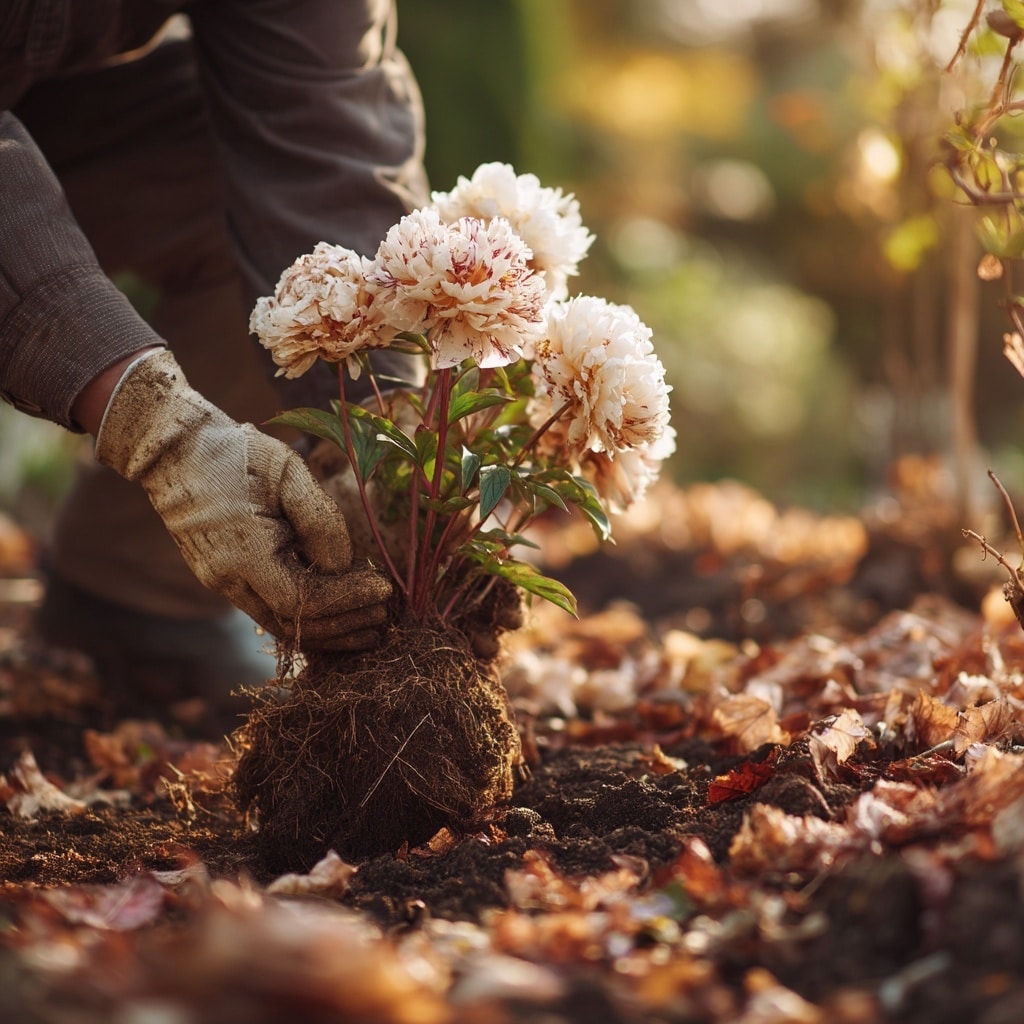
For the healthiest growth and best blooms, peonies should be planted in the fall. The ideal window is late September through October, depending on your climate. This allows the roots to settle in before the ground freezes, giving the plant a strong start in spring.
If you live in USDA Zones 7 or 8, you can plant a bit later in the fall, but earlier is still better. While spring planting is possible, fall-planted peonies typically outperform those planted in spring and often bloom a full season earlier.
If you’re moving an established plant, fall is also the time to do it—after the foliage has died back and the plant has gone dormant.
Try to plant your peonies at least 6 weeks before your first hard frost, so they have time to establish roots before winter sets in.
How to Plant Peonies
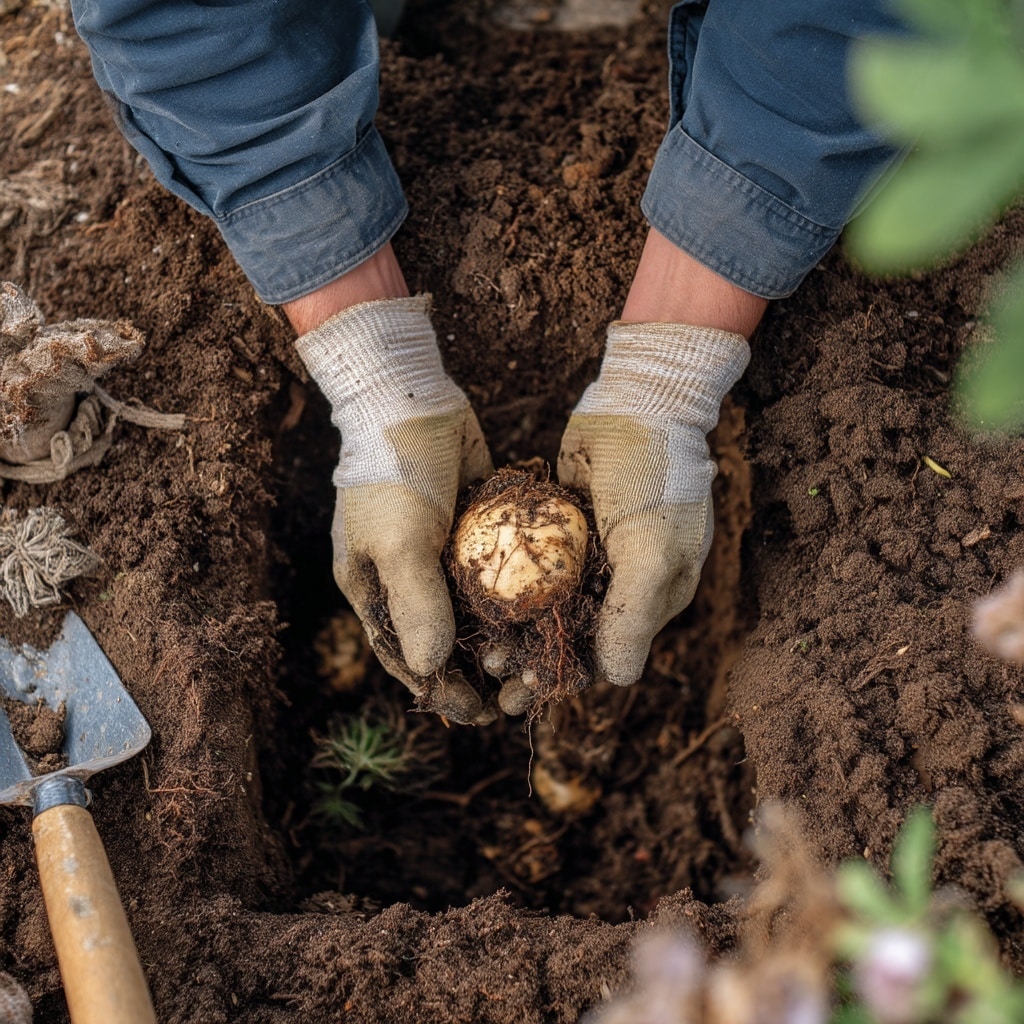
Most peonies are sold as bare-root tubers with visible buds, or “eyes,” and should be handled with care when planting. Follow these steps for long-term success:
🪴 Step-by-Step Planting Guide
- Spacing: Plant peonies 3 to 4 feet apart to ensure good airflow and prevent fungal issues.
- Dig a hole: Make it about 2 feet wide and deep. Add compost or well-rotted manure to enrich the soil.
- Add bone meal: Mix in 1 cup of bone meal at the bottom to promote strong root growth.
- Position the root: Place the tuber with eyes facing upward, and make sure the eyes sit no more than 2 inches below the soil surface.
- In southern climates, keep the depth closer to 1 inch and choose early-blooming varieties.
- Backfill gently: Refill the hole and press the soil down lightly—avoid burying the root too deeply.
- Water well: Give the plant a deep drink after planting to help it settle in.
For container-grown peonies, plant them at the same depth as in their original pot.
Peony Growing and Seasonal Care
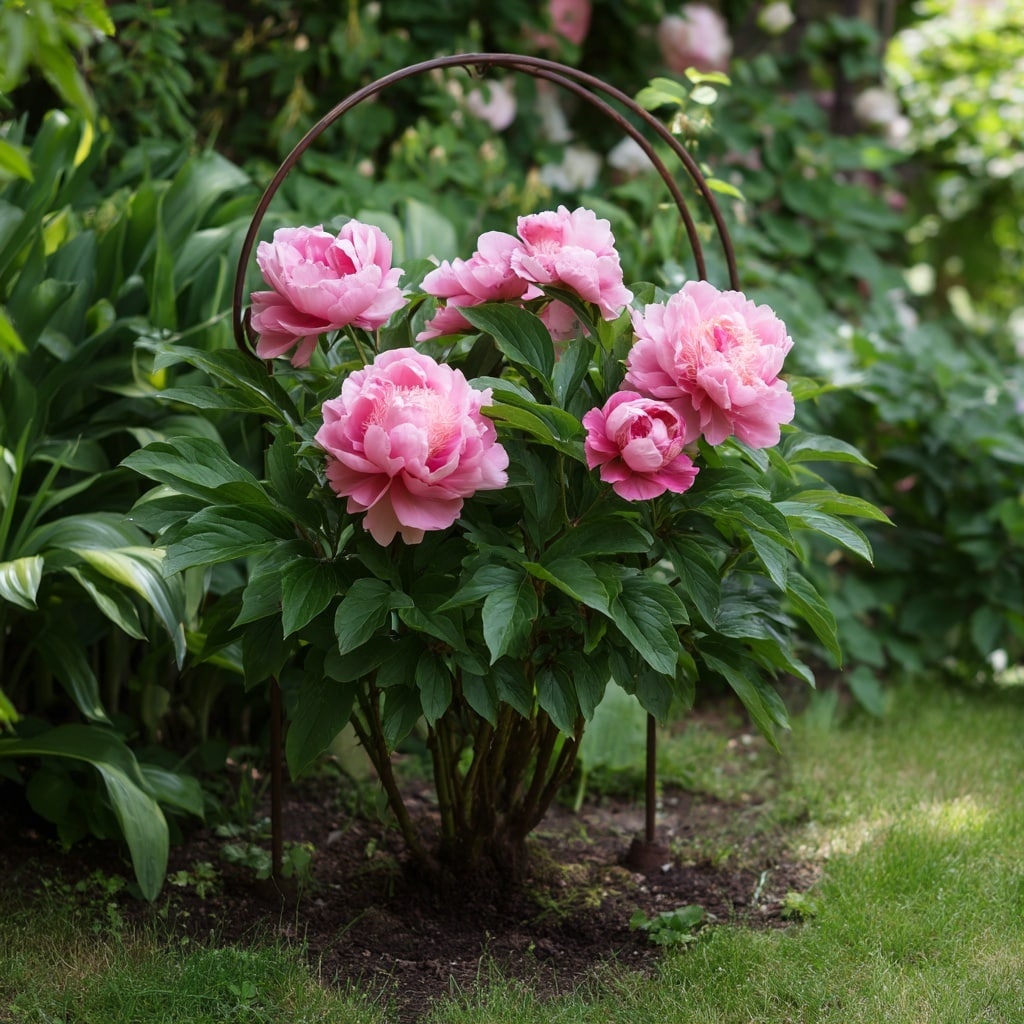
Once established, peonies are surprisingly low-maintenance. With a little seasonal attention, these plants will return stronger and bloom better each year.
🌸 During the Growing Season
- Sun and soil: Continue to provide full sun and well-draining soil. Peonies actually benefit from cold winters, which help trigger bud formation.
- Watering: Water deeply during dry spells, especially in the first year. Mature peonies are fairly drought-tolerant.
- Support heavy blooms: Their large flowers can cause stems to droop. Use peony rings or wire supports early in the season before growth begins.
🌿 After Bloom Care
- Deadhead spent blooms promptly to keep the plant tidy and encourage energy back into root development.
- Avoid over-fertilizing: Too much nitrogen can reduce flowering. If your soil is poor, apply compost or a balanced fertilizer only after flowering.
🍂 Fall Maintenance
- After the first frost, cut the foliage down to the ground to prevent disease.
- In cold climates, mulch lightly with pine needles or shredded bark during the first winter. Remove it in spring as growth resumes.
How to Divide Peonies
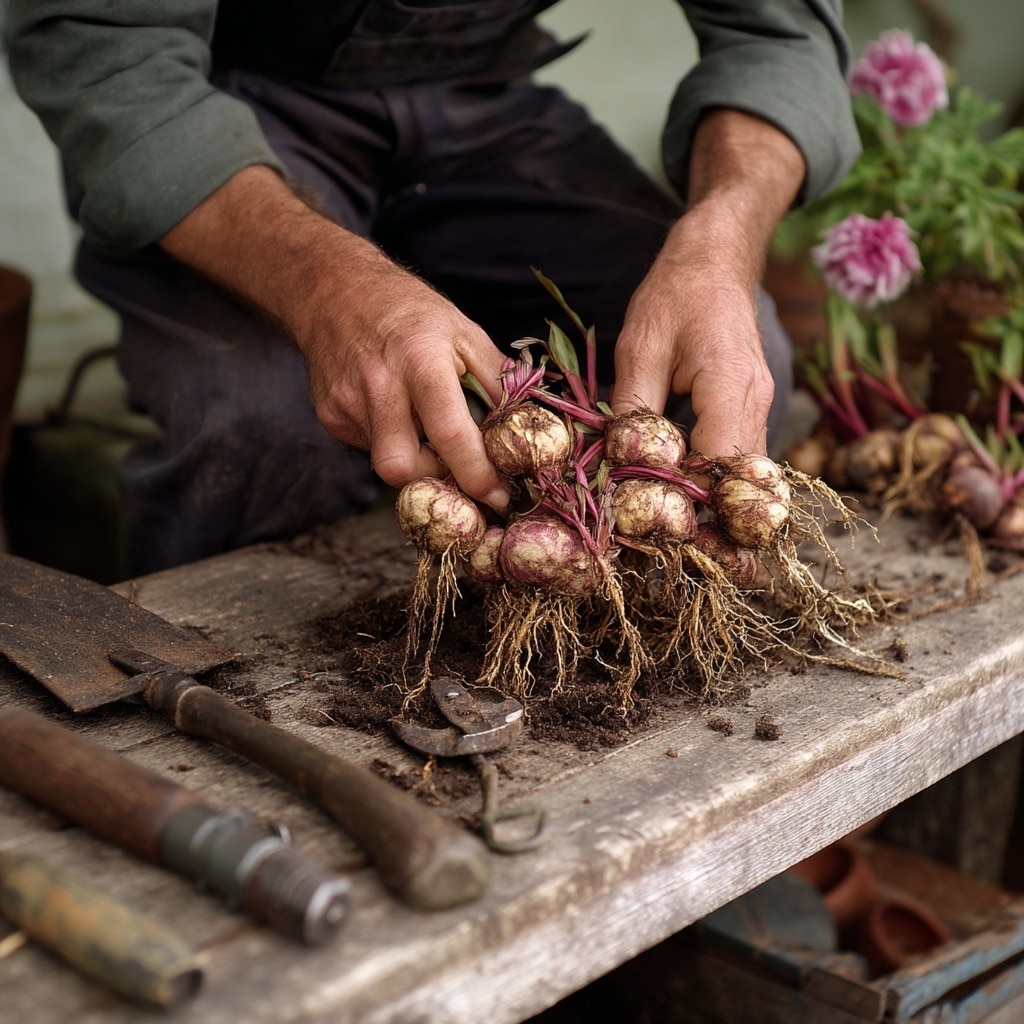
While peonies don’t need frequent division like some perennials, you may want to divide them if they become overcrowded, produce fewer blooms, or you want to propagate them.
🕰️ When to Divide
- The best time is in the fall, after the foliage has died back and the plant is dormant.
- Dividing in spring is not recommended, as it can delay blooming for years.
✂️ How to Divide and Replant
- Cut back foliage to just a couple of inches above the ground.
- Dig wide and deep around the root ball with a spade or garden fork, taking care not to damage the thick roots.
- Wash off soil to expose the “eyes”—small, pink or white buds that will produce next year’s growth.
- Divide with care: Each section should have 3 to 5 eyes and several strong roots.
- Replant divisions with eyes facing up, 1 to 2 inches below the soil surface in a sunny, well-draining spot.
- Water thoroughly, and mulch lightly for winter protection.
Avoid planting too deep—a common mistake that prevents peonies from blooming.
Types of Peonies
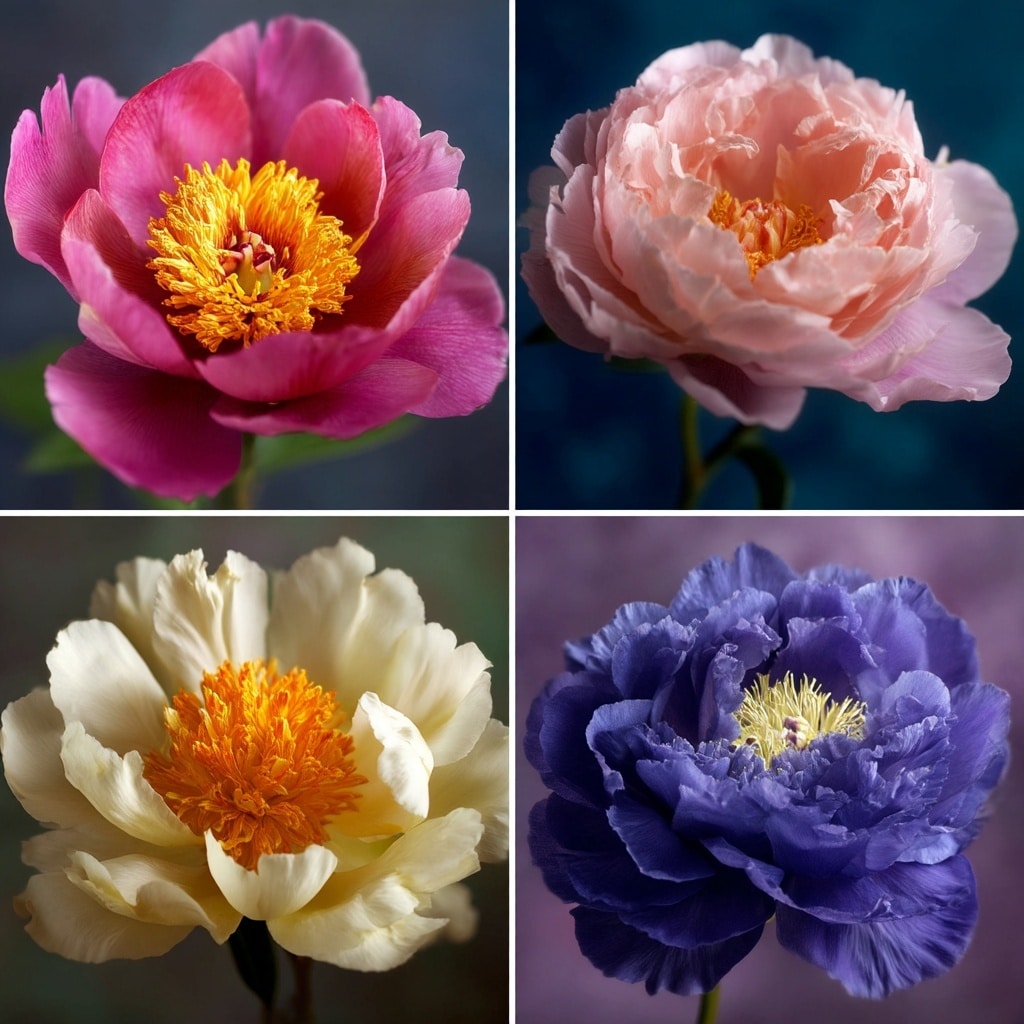
There’s a remarkable range of peonies to choose from, far beyond the classic white and pink blooms. They differ in flower form, fragrance, color, and bloom time—making it possible to enjoy peonies in the garden for several weeks.
🌺 Six Common Peony Flower Types
- Anemone – Petals surround a dense, pom-pom-like center
Example: ‘Laura Dessert’ – creamy white with fragrance, early bloomer - Single – One row of petals with visible stamens
Example: ‘Sparkling Star’ – deep pink, blooms early to midseason - Japanese – Decorative, showy centers with flat petals
Example: ‘Carrara’ – white petals with soft yellow centers - Semidouble – Multiple layers of petals, still airy
Example: ‘Pink Hawaiian Coral’ – coral-pink hue with a slight scent - Double – Full, ruffled petals; very dense
Example: ‘Candy Stripe’ – white with red streaks - Bomb – Central ball of petals sits atop a base layer
Example: ‘Angel Cheeks’ – soft pink with a delicate fragrance
🌿 Bonus: Itoh Peonies
These are hybrid crosses between herbaceous and tree peonies. They offer long-lasting blooms, sturdy stems, and come in stunning colors like yellow, apricot, and coral.
Planting a mix of early, midseason, and late varieties can extend the peony bloom time from mid-May through late June.
Peonies as Cut Flowers
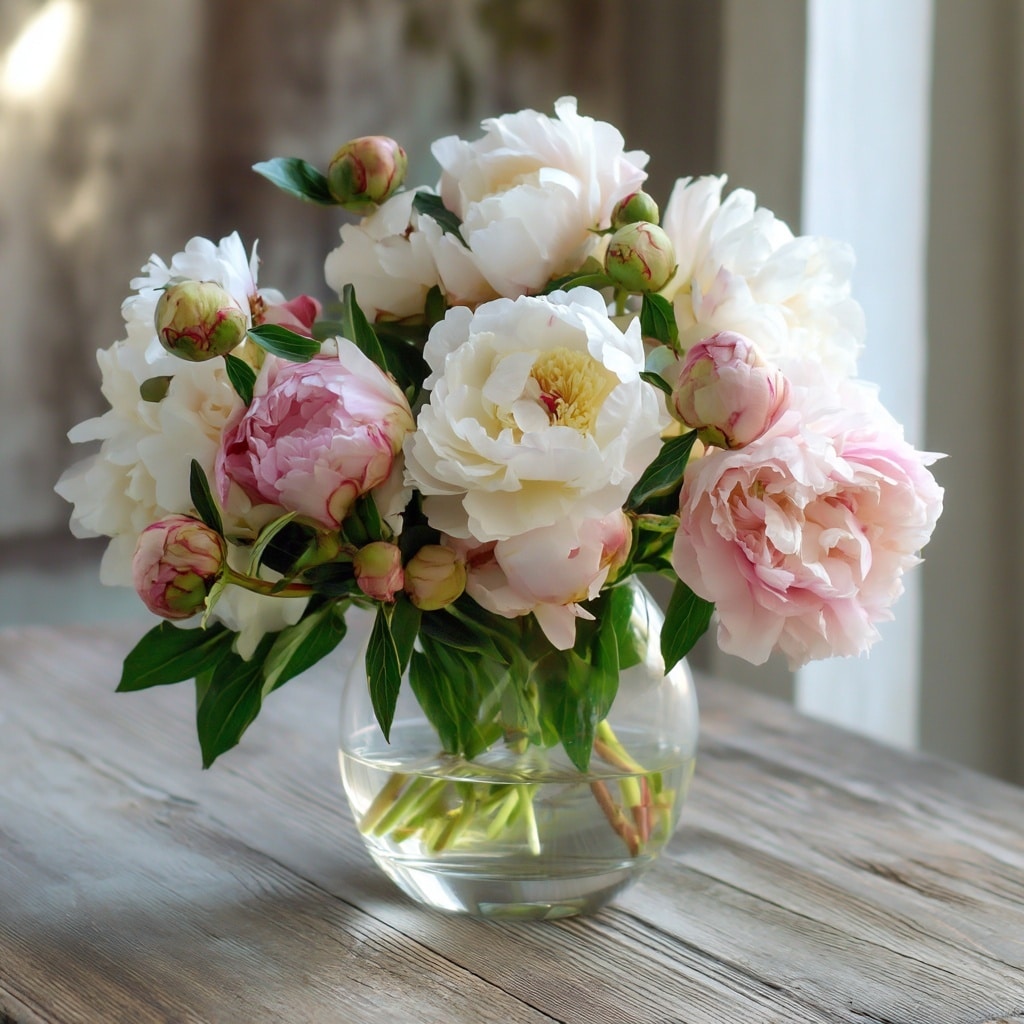
Few blooms are as elegant in a vase as peonies. With their full, fragrant flowers and long stems, they’re a favorite for bouquets and seasonal arrangements.
✂️ How to Harvest for the Vase
- Cut peonies in the morning, when the buds are still tight but feel soft—often called the “marshmallow stage.”
- Use clean, sharp pruners and snip the stem just above a set of healthy leaves.
- Place the stems immediately in lukewarm water to prevent wilting.
🧊 Storing Peonies for Later
To enjoy peonies beyond their natural bloom window:
- Wrap cut stems in a damp paper towel
- Place them in a plastic bag and refrigerate
- When ready to use, recut stems under water and place in a vase with fresh water
With proper care, peony blooms can last over a week indoors. Keep the vase in a cool room, away from direct sunlight, and change the water every few days to prolong freshness.
Common Pests and Problems
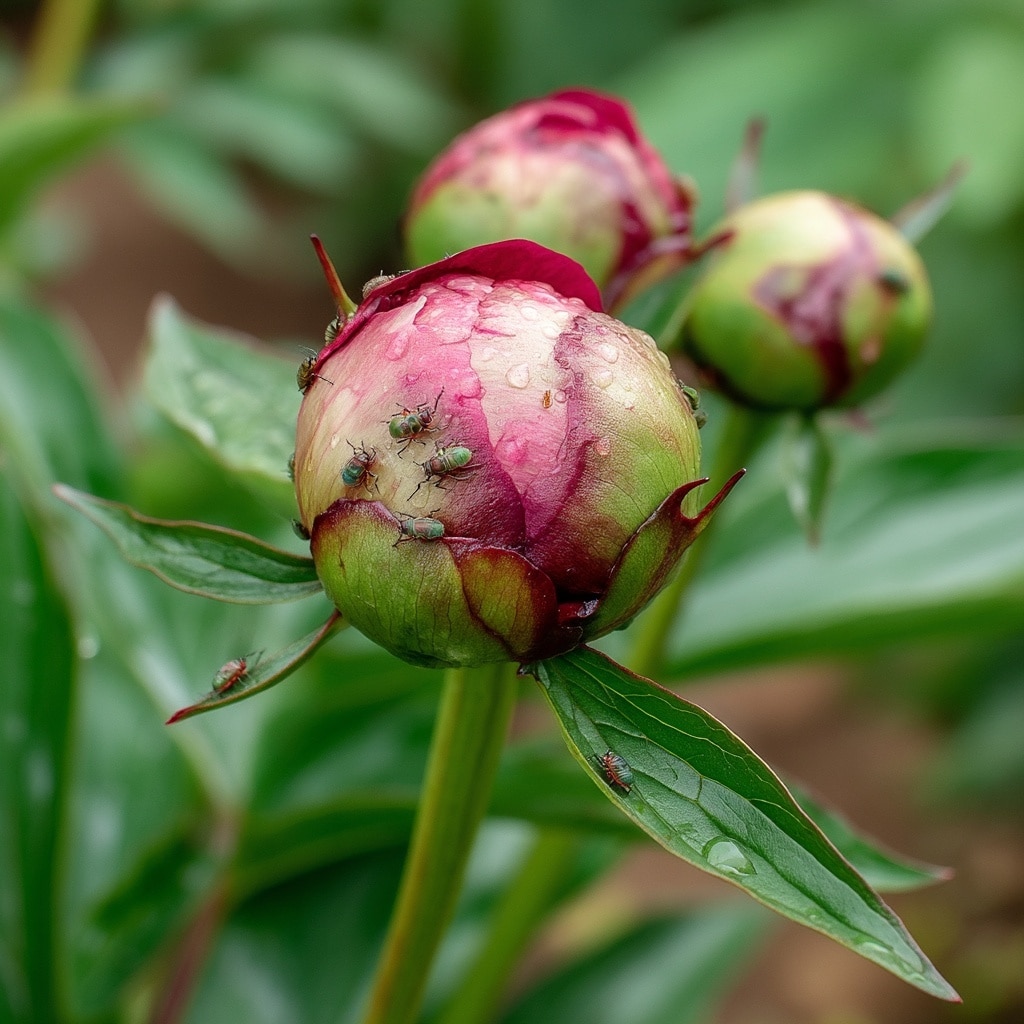
Peonies are generally hardy and low-maintenance, but they can occasionally suffer from pests and diseases. Knowing how to spot and manage these issues early will keep your plants healthy and blooming.
🐛 Common Pests
- Aphids – Small, sap-sucking insects that cluster on new growth
- Japanese beetles – Feed on flowers and leaves, leaving skeletonized damage
- Nematodes – Microscopic worms that can damage roots and reduce vigor
💡 Ants on peony buds? Don’t worry—they’re harmless. In fact, ants are often attracted to the sugary nectar and help deter other, more harmful pests.
🍂 Common Diseases
- Botrytis blight – Gray mold that causes buds to rot
- Stem rot – Browning at the base of the plant
- Leaf blotch – Irregular spots on leaves
- Verticillium wilt – Causes wilting and yellowing foliage
✅ Prevention Tips
- Plant in full sun with proper spacing for airflow
- Avoid overhead watering to reduce humidity
- Remove dead foliage in fall to prevent overwintering spores
- Don’t plant too deep—this can stress the plant and reduce blooming
Fun Facts About Peonies

Peonies are more than just pretty petals—they’re steeped in history, symbolism, and even a few surprises that might make you love them even more.
🌍 A Rich History
- Peonies have been cultivated for over 2,000 years, originating in China before spreading to Europe and North America.
- They’re the state flower of Indiana and a cherished symbol in many cultures, often associated with honor, prosperity, and a happy marriage.
🧪 Botanical Curiosities
- There are two native peony species in North America: Brown’s peony and the California peony.
- The famous explorer Marco Polo once described peonies as “roses as big as cabbages.“
🥗 Yes, They’re Edible!
- Peony petals are edible and can be used as a garnish for salads, lemonade, or iced tea.
- However, always make sure they’re grown without pesticides before consuming.
📅 Nature’s Planting Calendar
- According to the practice of phenology, when peonies bloom, it’s a signal that it’s safe to plant warm-season crops like melons.
These long-lived plants are not just beautiful—they’re resilient, symbolic, and full of character.
Conclusion
With their luxurious blooms, lush foliage, and remarkable longevity, peonies are a true gem in any garden. Whether you’re planting bare-root tubers or tending a decades-old clump, these perennials reward patience with show-stopping flowers that return year after year.
By choosing the right location, planting at the right depth and time, and following a few seasonal care tips, you can enjoy peonies that thrive for generations. Their low-maintenance nature and timeless beauty make them a favorite for gardeners everywhere.

